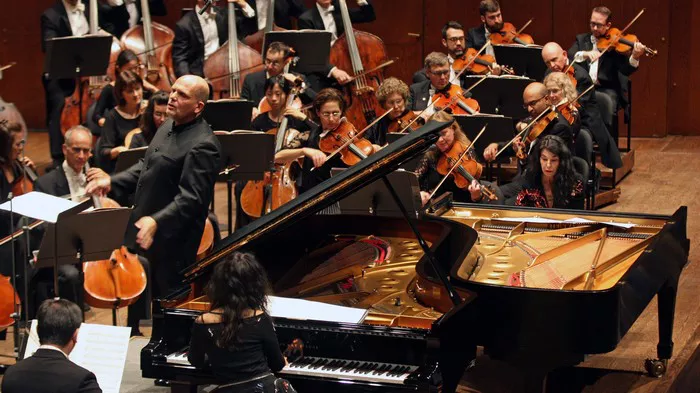Claude Emma Debussy, often simply known as Claude Debussy, stands as one of the most influential composers in the history of Western classical music. His innovative approach to harmony, form, and musical language marked a significant departure from the conventions of his time, paving the way for the development of new musical styles and techniques. In this comprehensive article, we will delve into the life, works, and lasting impact of this remarkable musician.
Early Life and Education
Claude Debussy was born on August 22, 1862, in Saint-Germain-en-Laye, France. From a young age, he showed exceptional talent in music, starting piano lessons at the age of seven. His musical abilities were further nurtured when he entered the Paris Conservatoire at the age of ten. At the Conservatoire, he studied composition, piano, and music theory under prominent teachers such as Antoine François Marmontel and Émile Durand.
Debussy’s early exposure to a wide range of musical influences, including the works of Richard Wagner, Franz Liszt, and Russian composers such as Modest Mussorgsky and Alexander Borodin, played a crucial role in shaping his musical style. He developed a keen interest in non-traditional scales, exoticism, and impressionistic textures, which would become defining elements of his later compositions.
Musical Style and Innovations
Debussy’s music is often associated with the Impressionist movement in art, characterized by its emphasis on atmosphere, mood, and the exploration of color and texture. However, Debussy himself was wary of being labeled as an Impressionist composer, preferring instead to be recognized as a “musical realist” who sought to capture fleeting emotions and impressions in sound.
One of Debussy’s most notable innovations was his use of harmony. He eschewed the traditional functional harmony of the Romantic era in favor of a more fluid and ambiguous harmonic language. This can be heard in works such as “Prelude to the Afternoon of a Faun” and “La Mer,” where traditional tonal centers are often blurred, creating a sense of ambiguity and mystery.
Debussy also made extensive use of non-traditional scales and modes, such as the whole-tone scale and the pentatonic scale, which added a distinctive exotic flavor to his music. These scales, along with his use of parallel chords and unresolved dissonances, contributed to the ethereal and otherworldly quality of his compositions.
In terms of form, Debussy was a master of musical nuance and subtlety. He often employed free and organic structures, breaking away from the rigid formal constraints of the past. His use of thematic transformation and development, as seen in pieces like “Images” and “Suite Bergamasque,” demonstrated a highly sophisticated approach to musical architecture.
Major Works and Contributions
Debussy’s oeuvre encompasses a wide range of genres, including piano music, orchestral works, chamber music, opera, and songs. Some of his most famous and enduring compositions include:
Clair de Lune – This beloved piano piece, part of the Suite Bergamasque, is characterized by its dreamy atmosphere and delicate arpeggios. It remains one of Debussy’s most popular works.
Prelude to the Afternoon of a Faun – Inspired by the poem of the same name by Stéphane Mallarmé, this orchestral masterpiece evokes a languid, sensual mood through its shimmering textures and evocative melodies.
La Mer – Debussy’s symphonic sketches depicting the sea are a triumph of orchestral color and imagination. Divided into three movements, “From Dawn to Noon on the Sea,” “Play of the Waves,” and “Dialogue of the Wind and the Sea,” La Mer captures the ever-changing moods and dynamics of the ocean.
Pelléas et Mélisande – Debussy’s only completed opera, based on Maurice Maeterlinck’s symbolist play, is a pinnacle of French opera. Its subtle characterizations, evocative orchestration, and innovative use of leitmotifs set it apart as a groundbreaking work in the operatic repertoire.
Images for Orchestra – A collection of three orchestral pieces (“Gigues,” “Ibéria,” and “Rondes de Printemps”), Images showcases Debussy’s mastery of orchestration and his ability to evoke vivid sonic landscapes.
Debussy’s contributions to music extended beyond his own compositions. His ideas and techniques profoundly influenced subsequent generations of composers, including Maurice Ravel, Igor Stravinsky, Béla Bartók, and later figures in the avant-garde and experimental music movements.
Legacy and Influence
Debussy’s impact on music cannot be overstated. His innovative approach to harmony, form, and orchestration paved the way for the development of new musical styles such as neoclassicism, serialism, and spectralism. His emphasis on timbre and color expanded the expressive possibilities of orchestral music, influencing composers across genres and continents.
The legacy of Debussy’s music can be heard in diverse musical contexts, from film scores to electronic music. His compositions continue to be performed and studied worldwide, attesting to their enduring appeal and relevance. Debussy’s ability to evoke mood, atmosphere, and emotion through music remains a source of inspiration for musicians and listeners alike.
Conclusion
Claude Emma Debussy’s contributions to music were revolutionary, reshaping the course of Western classical music and leaving an indelible mark on the musical landscape. His innovative use of harmony, form, and orchestration, combined with his keen sense of atmosphere and mood, ensured his place as one of the most significant composers of the late 19th and early 20th centuries.

